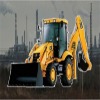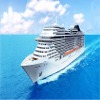container bars and restaurants / The rise of the container cafe
The rise of the container cafe
The concept of the container cafe is revolutionizing the coffee culture around the globe.
What started as a quirky, innovative idea has now morphed into a mainstream trend, capturing the imagination of coffee enthusiasts and entrepreneurs alike.
What exactly is driving this trend? Why are container cafes popping up in urban landscapes, rural settings, and even in unexpected places? Lets dive into the rise of the container cafe, exploring its roots, appeal, and potential for the future.
What is a Container Cafe?
Definition and Concept
A container cafe is a cafe housed in a re-purposed shipping container.
The concept leverages the inherent durability and portability of shipping containers, creating unique, flexible spaces for serving coffee and other beverages.
Historical Background
The idea of re-purposing shipping containers isnt new. Initially used for storage and temporary structures, the shift towards using them as cafes began in the early 2000s.
As sustainability became a more pressing concern, entrepreneurs started seeing the potential of these containers as affordable, eco-friendly building materials.
20240611
The Appeal of Container Cafes
Cost-Effectiveness
One of the biggest draws of container cafes is their cost-effectiveness. Traditional brick-and-mortar cafes can be prohibitively expensive to set up, with costs running into the hundreds of thousands. In contrast, a container cafe can be established at a fraction of the cost, making it an attractive option for budding entrepreneurs.
Sustainability and Eco-Friendliness
Container cafes align perfectly with the growing global emphasis on sustainability. Re-purposing old shipping containers reduces waste and promotes recycling. Additionally, many container cafes incorporate other green practices, such as using energy-efficient appliances and sustainable materials for interior finishes.
Unique Aesthetic and Design Flexibility
The industrial chic look of container cafes is undeniably trendy. Their modular nature allows for endless customization, giving each cafe a unique identity. Whether it’s a minimalist design with exposed metal and wood elements or a vibrant, art-covered exterior, container cafes can be tailored to fit any aesthetic.
Designing a Container Cafe
Initial Planning and Conceptualization
Before diving into construction, it’s crucial to have a clear plan. This includes defining the cafes concept, target market, and unique selling points. Considerations such as menu offerings, operational flow, and customer experience should guide the initial design process.
Choosing the Right Location
Location is key to any cafes success. Container cafes, with their portability, offer a significant advantage in this area. They can be placed in high-traffic urban areas, scenic rural settings, or even as part of a temporary event. Assessing foot traffic, visibility, and accessibility is essential when choosing a site.
Interior Design and Layout
Maximizing the limited space inside a shipping container requires clever design solutions. Efficient use of space can be achieved through multi-functional furniture, smart storage solutions, and a well-thought-out layout that ensures smooth customer flow and a pleasant ambiance.
20240611
Economic Benefits of Container Cafes
Lower Initial Investment
Starting a container cafe typically involves a lower initial investment compared to traditional cafes. The cost savings from using a pre-existing structure can be redirected into high-quality equipment, better ingredients, and marketing efforts.
Reduced Operating Costs
Container cafes often have lower operating costs as well. They usually require less energy to heat and cool, and their smaller size means less expenditure on rent and utilities. These savings can significantly impact the profitability of the business.
Opportunities for Small Business Owners
For small business owners and first-time entrepreneurs, container cafes offer an accessible entry point into the food and beverage industry. The reduced financial risk and scalable nature of these cafes make them a popular choice for those looking to test the waters before expanding.
Sustainability and Environmental Impact
Recycling Shipping Containers
By re purposing shipping containers, container cafes contribute to reducing industrial waste. Each container reused is one less piece of potential scrap metal in the environment, aligning with broader efforts to promote recycling and sustainable building practices.
Energy Efficiency
Many container cafes are designed with energy efficiency in mind. Insulated panels, energy-efficient windows, and solar power are often used to minimize the environmental footprint. These measures not only benefit the planet but also reduce long-term operating costs.
Minimizing Waste
Container cafes often incorporate waste reduction strategies such as composting organic waste, using biodegradable packaging, and sourcing locally to minimize the carbon footprint. These practices resonate well with eco-conscious consumers and can enhance the cafes brand image.
20240611
Container Cafes Around the World
Popular Locations
Container cafes have sprung up in cities and towns worldwide, from bustling urban centers like New York and London to serene rural settings in Australia and New Zealand. Their versatility makes them suitable for a wide range of environments.
Challenges Faced by Container Cafes
Regulatory and Zoning Issues
One of the primary challenges faced by container cafes is navigating regulatory and zoning laws. Depending on the location, there may be stringent building codes and regulations that must be adhered to, which can complicate the setup process.
Insulation and Temperature Control
Shipping containers are made of metal, which can be a poor insulator. Ensuring proper insulation and temperature control is essential to maintain a comfortable environment for both customers and staff, which can be a challenge in extreme weather conditions.
Maintenance and Durability
While shipping containers are durable, they do require regular maintenance to prevent rust and wear. This involves periodic inspections and upkeep to ensure the structure remains safe and appealing.
Technology and Innovation in Container Cafes
Smart Cafe Concepts
The integration of technology in container cafes is on the rise. From app-based ordering systems to smart kitchen appliances, technology can enhance efficiency and customer experience. Some cafes are even experimenting with automated service and AI-driven customer interactions.
Integration of Green Technologies
Green technologies such as solar panels, rainwater harvesting systems, and energy-efficient HVAC systems are becoming more common in container cafes. These innovations not only reduce environmental impact but also appeal to eco-conscious customers.
Marketing a Container Cafe
Utilizing Social Media
Social media is a powerful tool for marketing container cafes. Platforms like Instagram, Facebook, and TikTok allow cafes to showcase their unique designs, promote special offers, and engage with customers. Eye-catching visuals and engaging content can drive foot traffic and build a loyal customer base.
Creating a Unique Brand Identity
Establishing a strong brand identity is crucial for standing out in a competitive market. This includes a memorable logo, cohesive color schemes, and a clear brand message that resonates with the target audience. A distinctive brand can help create a lasting impression and encourage repeat business.
Engaging with the Community
Building strong ties with the local community can significantly impact a container cafes success. Hosting events, collaborating with local artists, and participating in community initiatives can create a sense of belonging and loyalty among customers.
Future Trends in Container Cafes
Expanding Beyond Coffee
Many container cafes are expanding their offerings beyond just coffee. Incorporating full menus with breakfast, lunch, and dinner options, as well as alcoholic beverages, can attract a broader customer base and increase revenue streams.
Integration with Retail and Co-working Spaces
Combining container cafes with retail spaces or co-working environments is a growing trend. This hybrid model not only maximizes space utilization but also creates a dynamic, multi-purpose environment that appeals to a wide range of customers.
Pop-Up and Mobile Container Cafes
The mobility of shipping containers makes them ideal for pop-up and mobile cafes. These can be used for special events, festivals, or as temporary installations in high-traffic areas. This flexibility allows for creative marketing and the ability to reach new customers.
Case Studies of Successful Container Cafes
Examples from Different Countries
Examining successful container cafes from around the world can provide valuable insights. For instance, The Grounds Keeper in Australia utilizes solar power and rainwater harvesting, while Silo Coffee in Germany focuses on zero-waste operations.
Lessons Learned
These case studies highlight the importance of innovative design, sustainable practices, and community engagement. They also underscore the need for adaptability and continuous improvement to stay relevant in a competitive market.
Conclusion
The rise of the container cafe is a testament to human ingenuity and adaptability. These innovative spaces offer a blend of affordability, sustainability, and unique charm that resonates with modern consumers. As the trend continues to grow, container cafes are set to become a staple in the global coffee culture, offering endless possibilities for creativity and community engagement.
FAQs
1.What are the primary benefits of a container cafe?
Container cafes are cost-effective, sustainable, and offer unique design flexibility. They are also portable, allowing for strategic placement and mobility.
2.How much does it cost to set up a container cafe?
The cost varies depending on the location, size, and design of the container cafe. On average, it can range from $25,000 to $120,000, significantly lower than traditional cafes.
3.Are container cafes environmentally friendly?
Yes, container cafes are environmentally friendly as they re-purpose shipping containers and often incorporate energy-efficient and sustainable practices.
4.Can container cafes be used in all climates?
With proper insulation and climate control measures, container cafes can be used in a variety of climates.
5.What are some innovative ideas for container cafes?
Innovative ideas include integrating smart technologies, combining with retail or co-working spaces, hosting cultural events, and using green technologies like solar panels and rainwater harvesting.
20 Beautiful Container Coffee Shop Design
Container coffee shops have become a trendy and innovative solution for coffee enthusiasts and entrepreneurs alike. These unique structures, crafted from re-purposed containers, offer a versatile and sustainable option for creating cozy, stylish, and functional coffee shops. But what makes these container coffee shops so popular? Lets dive into the world of container coffee shop designs and explore 20 beautiful ideas that will inspire your next venture.
Design Inspiration
Design plays a crucial role in the success of any coffee shop. It sets the mood, attracts customers, and enhances the overall experience. For container coffee shops, design inspiration can come from various sources, including architecture, nature, art, and personal preferences. The key is to create a space that not only looks appealing but also feels welcoming and functional.
Modern Minimalist Design
Minimalism is all about simplicity and elegance. For a modern minimalist container coffee shop, focus on clean lines, neutral colors, and abundant natural light. Use sleek furniture and avoid clutter to create a serene and inviting atmosphere. The simplicity of this design allows the coffee and the conversation to take center stage.
Industrial Chic
Industrial chic combines the raw, rugged aesthetic of industrial design with chic, modern elements. In a container coffee shop, this can be achieved with exposed metal beams, brick walls, and rustic wooden furniture. The contrast between the industrial materials and the cozy coffee shop vibe creates a unique and inviting space.
Eco-Friendly and Sustainable Designs
Sustainability is a growing trend in the design world, and container coffee shops are a perfect canvas for eco-friendly ideas. Use recycled materials for construction and décor, and opt for energy-efficient lighting and appliances. Green roofs and solar panels can further enhance the sustainability of your coffee shop, making it an eco-conscious choice for customers.
Vintage and Rustic Charm
For those who love a touch of nostalgia, vintage and rustic designs are the way to go. Incorporate antique furniture, distressed wood, and vintage decorations to create a warm and cozy atmosphere. This design style evokes a sense of comfort and history, making it perfect for a relaxing coffee break.
Urban Jungle
Bringing the outdoors in is a fantastic way to create a refreshing and vibrant coffee shop. An urban jungle design involves filling your container coffee shop with plants and greenery. Not only do plants improve air quality, but they also add a sense of tranquility and liveliness to the space.
Artistic and Creative Spaces
Art can transform any space, and a container coffee shop is no exception. Consider showcasing local art, murals, and creative installations to make your coffee shop a hub for creativity and inspiration. This not only attracts art lovers but also provides a unique and ever-changing environment for customers.
Pop-Up and Mobile Designs
One of the biggest advantages of container coffee shops is their portability. Pop-up and mobile designs allow you to take your coffee shop on the road, setting up at different locations and events. Design for mobility with easy-to-assemble structures and multifunctional furniture to make setup and teardown a breeze.
Waterfront and Beachside Designs
Imagine sipping a latte with a view of the ocean. Waterfront and beachside container coffee shops can create a laid-back, vacation-like atmosphere. Use coastal elements like driftwood, nautical décor, and bright, airy colors to enhance the beachy vibe and make your coffee shop a popular spot for relaxation.
Compact and Functional Designs
Container coffee shops are often limited in space, so it’s essential to maximize every square foot. Focus on efficient layouts, multifunctional furniture, and smart storage solutions. This ensures that your coffee shop remains functional and comfortable, even in a compact space.
Rooftop and Elevated Designs
Take advantage of vertical space by incorporating rooftop seating into your container coffee shop design. Rooftop areas offer additional seating with a view, creating a unique and memorable experience for customers. Just make sure to include safety features and weather protection to keep guests comfortable.
Community-Oriented Designs
Coffee shops are social hubs, so designing with the community in mind can be highly beneficial. Create spaces that encourage social interaction, such as communal tables, comfortable seating areas, and interactive features like notice boards or book exchanges. This fosters a sense of community and makes your coffee shop a beloved local hangout.
Tech-Savvy Designs
In today’s digital age, integrating technology into your coffee shop design is a smart move. Provide free Wi-Fi, charging stations, and other tech amenities to cater to the modern, tech-savvy customer. Consider incorporating digital menus and ordering systems to streamline operations and enhance the customer experience.
Multi-Functional Spaces
Why limit your container coffee shop to just serving coffee? Combine it with other functions, such as a co-working space, bookshop, or art gallery. Multi-functional spaces attract a diverse crowd and provide additional revenue streams. Design with versatility in mind to accommodate different activities and events.
Themed Designs
A themed container coffee shop can stand out and attract a specific audience. Choose a theme that resonates with your target market and reflects your brand’s personality. Whether it’s a retro diner, a sci-fi haven, or a literary café, themed designs create a unique and memorable experience for customers.
DIY and Customizable Designs
Personalizing your container coffee shop with DIY elements can add a unique touch and save on costs. From hand-painted signs to custom-built furniture, DIY projects allow you to infuse your personality into the design. Plus, customers appreciate the effort and creativity that goes into a DIY space.
Outdoor and Indoor Blends
Blur the lines between indoor and outdoor spaces by creating a seamless flow between the two. Use large windows, retractable walls, and outdoor seating areas to connect your container coffee shop with its surroundings. This not only expands your seating capacity but also provides a versatile and enjoyable environment for customers.
Lighting and Ambiance
Lighting plays a crucial role in setting the mood of your coffee shop. Use a mix of natural and artificial lighting to create a warm and inviting atmosphere. Pendant lights, fairy lights, and floor lamps can add character and charm, while adjustable lighting allows you to change the ambiance as needed.
Conclusion
The future of container coffee shop designs is bright and full of possibilities. These versatile structures offer endless opportunities for creativity, sustainability, and functionality. Whether you’re looking to create a cozy neighborhood spot or a trendy urban café, there’s a container coffee shop design to suit your vision. By focusing on design, you can create a space that not only serves great coffee but also offers a memorable and enjoyable experience for all who visit.
Are Container Coffee shops Here To Stay?
In recent years, the coffee industry has witnessed a unique trend - the emergence of container Coffee shops. These innovative structures have captured the imagination of entrepreneurs and consumers alike, offering a blend of functionality, sustainability, and aesthetic appeal.
The Rise of Container Architecture
The concept of repurposing containers for architectural projects gained traction in the early 2000s, driven by factors such as sustainability, affordability, and the desire for unique design solutions.
Advantages of Container Coffee shops
Sustainability
One of the primary appeals of container Coffee shops is their eco-friendly nature. By re-purposing existing containers, these establishments contribute to waste reduction and promote sustainable construction practices.
Additionally, many container Coffee shops incorporate green technologies such as solar panels and rainwater harvesting systems, further minimizing their environmental footprint.
Mobility
Unlike traditional brick-and-mortar cafes, container Coffee shops can be easily transported to different locations, catering to changing consumer demands and seasonal trends. This mobility enables entrepreneurs to explore new markets, participate in events, and capitalize on temporary opportunities such as festivals or construction sites.
Cost-effectiveness
Compared to constructing a conventional building, setting up a container coffeeshop typically involves lower upfront costs and shorter construction timelines. The modular nature of containers streamlines the building process, reducing labor and material expenses. Additionally, their compact footprint translates to lower operational costs, making them an attractive option for small business owners.
Challenges Faced by Container Coffee shops
Regulatory Hurdles
While container architecture offers numerous benefits, it also presents regulatory challenges related to zoning, permits, and building codes. Some municipalities may have strict regulations regarding the use of containers for commercial purposes, requiring entrepreneurs to navigate bureaucratic hurdles before opening their Coffee shops.
Insulation and Climate Control
containers, originally designed for cargo transport, have limited insulation properties, making them susceptible to temperature fluctuations and condensation. Ensuring adequate insulation and climate control within a container coffeeshop can be challenging, particularly in extreme climates where heating or cooling may be necessary.
Limited Space
While the compact size of containers is advantageous in terms of mobility and affordability, it also poses limitations in terms of space. Designing an efficient layout that maximizes functionality while accommodating seating, equipment, and storage can be a juggling act for coffeeshop owners.
Success Stories of Container Coffee shops
Case Study: Starbucks Reclamation Drive-Thru
In 2011, Starbucks unveiled its first container drive-thru in Tukwila, Washington. Dubbed the "Reclamation Drive-Thru," this innovative concept repurposed four containers to create a sustainable and visually striking coffee kiosk. The success of the Tukwila location inspired Starbucks to explore similar designs in other markets, highlighting the potential of container architecture in the coffee industry.
Independent Ventures
Beyond corporate chains, independent entrepreneurs have also embraced the container coffeeshop trend, leveraging its flexibility and affordability to launch unique ventures. From cozy neighborhood cafes to trendy pop-up shops, these independent establishments contribute to the diversity and vibrancy of the coffee culture.
The Future of Container Coffee shops
As consumer preferences continue to evolve, container Coffee shops are poised to remain relevant in the coffee industry. Market trends indicate a growing demand for sustainable and experiential dining concepts, aligning with the key attributes of container architecture. Furthermore, ongoing innovations in design and technology are likely to enhance the functionality and appeal of container Coffee shops, ensuring their longevity in the market.
Community Impact and Social Responsibility
Beyond their commercial viability, container Coffee shops have the potential to make a positive impact on local communities. By repurposing vacant lots or underutilized spaces, these establishments contribute to urban revitalization and community engagement. Moreover, many container Coffee shops prioritize social responsibility initiatives, such as sourcing ethically sourced coffee beans, supporting local artisans, and implementing eco-friendly practices.
Conclusion: The Enduring Appeal of Container Coffee shops
In conclusion, container Coffee shops represent more than just a passing trend - they embody the intersection of innovation, sustainability, and entrepreneurial spirit. Despite facing challenges such as regulatory hurdles and limited space, the advantages of container architecture, including mobility, cost-effectiveness, and eco-friendliness, ensure their continued relevance in the coffee industry. Whether its a corporate giant like Starbucks or a local startup, the allure of container Coffee shops is undeniable, promising a caffeinated future thats both stylish and sustainable.
Starting Your Own Container Bar or Cafe
Are you considering venturing into the hospitality industry? Perhaps youre intrigued by the idea of owning a trendy establishment that stands out from the traditional brick-and-mortar cafes and bars. In recent years, container bars and cafes have gained immense popularity for their unique charm and flexibility. In this guide, well walk you through the essential steps to start your own container bar or cafe successfully.
I. Introduction
A. Definition of a container bar or cafe
Container bars and cafes are innovative businesses that utilize re-purposed shipping containers as their primary structure. These containers offer a quirky and unconventional setting for patrons to enjoy drinks, coffee, and delicious food.
B. Growing trend in the hospitality industry
With the rise of urbanization and the demand for experiential dining concepts, container bars and cafes have emerged as a lucrative opportunity for entrepreneurs. Their flexibility in terms of location and design makes them an attractive option for both customers and business owners.
II. Market Research
A. Identifying target audience
Before diving into the venture, its crucial to conduct thorough market research to understand your target demographic. Analyze consumer preferences, lifestyle trends, and spending habits to tailor your offerings accordingly.
B. Analyzing competition
Survey the existing market to identify competitors and assess their strengths and weaknesses. This information will help you differentiate your container bar or cafe and carve out a unique niche.
III. Location Selection
A. Factors to consider
Choosing the right location is paramount to the success of your venture. Factors such as foot traffic, visibility, and accessibility should influence your decision-making process.
B. Urban vs. suburban vs. rural locations
Consider the pros and cons of urban, suburban, and rural settings for your container bar or cafe. Each environment offers distinct advantages and challenges, so weigh your options carefully.
IV. Legal Requirements and Permits
A. Licensing regulations
Navigating the legal landscape is essential to ensure compliance with licensing regulations for alcohol service, food preparation, and business operations.
B. Health and safety standards
Adhere to stringent health and safety standards to maintain a hygienic environment for your patrons. Obtain necessary permits and certifications to demonstrate your commitment to quality and cleanliness.
V. Design and Layout
A. Utilizing space efficiently
Maximize the limited space available in a container by optimizing the layout for functionality and aesthetics. Clever design solutions can create an inviting atmosphere that maximizes customer satisfaction.
B. Creative interior design ideas
Inject personality into your container bar or cafe with creative interior design elements that reflect your brand identity. Consider themes, color schemes, and decorative accents to enhance the ambiance.
VI. Menu Development
A. Crafting a unique menu
Develop a diverse menu that caters to different tastes and dietary preferences. Experiment with innovative recipes and signature drinks to set your container bar or cafe apart from the competition.
B. Sourcing suppliers for quality ingredients
Establish relationships with reliable suppliers to ensure a steady supply of fresh, high-quality ingredients for your menu. Emphasize locally sourced and organic products to appeal to eco-conscious consumers.
VII. Marketing Strategies
A. Social media presence
Harness the power of social media to engage with your target audience and build brand awareness. Share captivating content, run promotions, and interact with followers to cultivate a loyal customer base.
B. Collaborations with local businesses
Forge strategic partnerships with neighboring businesses, event organizers, and community groups to expand your reach and attract new customers. Collaborative marketing initiatives can generate buzz and drive foot traffic to your establishment.
VIII. Staffing and Training
A. Hiring skilled bartenders and baristas
Recruit experienced and passionate staff members who embody your brand values and provide exceptional service to customers. Invest in training programs to enhance their skills and product knowledge.
B. Providing exceptional customer service
Prioritize customer satisfaction by fostering a welcoming and inclusive environment where patrons feel valued and appreciated. Train your staff to anticipate needs, resolve issues promptly, and exceed expectations.
IX. Grand Opening and Launch
A. Planning a successful launch event
Organize a memorable grand opening event to generate excitement and attract attention to your container bar or cafe. Offer special promotions, live entertainment, and exclusive tastings to entice guests and leave a lasting impression.
B. Attracting customers on opening day
Implement targeted marketing strategies to drive traffic to your grand opening and encourage repeat visits from satisfied customers. Leverage social media, local advertising, and word-of-mouth referrals to maximize visibility and attendance.
X. Managing Operations
A. Inventory management
Implement efficient inventory management systems to track stock levels, prevent waste, and optimize supply chain logistics. Regularly monitor sales data and customer feedback to make informed purchasing decisions.
B. Maintaining cleanliness and hygiene standards
Enforce rigorous cleanliness and hygiene protocols to uphold food safety standards and protect the health of your patrons. Train your staff on proper sanitation practices and conduct regular inspections to ensure compliance.
XI. Customer Feedback and Adaptation
A. Soliciting feedback from patrons
Encourage open communication with your customers and actively seek feedback on their experiences at your container bar or cafe. Use surveys, comment cards, and online reviews to gather valuable insights and identify areas for improvement.
B. Implementing changes based on feedback
Take proactive steps to address customer feedback and make necessary adjustments to enhance the overall guest experience. Continuously iterate on your offerings, service standards, and operational procedures to stay responsive to evolving customer preferences.
XII. Financial Management
A. Budgeting and forecasting
Develop a comprehensive business plan that outlines your financial goals, projected expenses, and revenue targets. Monitor your financial performance closely and adjust your budgeting and forecasting strategies as needed to achieve profitability.
B. Tracking expenses and revenue
Maintain detailed records of your expenses and revenue streams to accurately assess your financial health and identify areas of cost savings or revenue growth. Use accounting software or hire professional services to streamline your financial management processes.
XIII. Sustainability Practices
A. Eco-friendly initiatives
Embrace sustainability practices to minimize your environmental footprint and appeal to environmentally conscious consumers. Implement energy-efficient technologies, waste reduction strategies, and recycling programs to demonstrate your commitment to environmental stewardship.
B. Reducing waste and carbon footprint
Explore innovative solutions to reduce waste generation and lower your carbon footprint throughout your operations. From eco-friendly packaging options to composting organic waste, every effort contributes to a more sustainable future.
XIV. Challenges and Solutions
A. Dealing with unexpected hurdles
Anticipate and prepare for potential challenges that may arise in the course of running your container bar or cafe. From supply chain disruptions to regulatory changes, flexibility and adaptability are key to overcoming obstacles and maintaining business resilience.
B. Strategies for overcoming challenges
Develop contingency plans and alternative strategies to mitigate risks and navigate challenges effectively. Leverage your creativity, resourcefulness, and determination to find solutions that keep your business thriving in the face of adversity.
XV. Conclusion
Starting your own container bar or cafe is an exciting endeavor that offers endless opportunities for creativity, innovation, and entrepreneurship. By following the steps outlined in this guide and staying committed to excellence, you can turn your vision into reality and create a thriving destination that delights customers and enriches your community.
Creative Container Bar Ideas
Container bars have become a trendy and innovative way to serve up drinks and good times. These unique establishments are popping up all over the world, offering a fresh take on the traditional bar experience. In this article, well explore nine creative container bar ideas that will inspire you to create your own or visit one near you. From beachfront tiki bars to urban rooftop lounges, container bars offer a world of possibilities.
The Rise of Container Bars
Container bars have emerged as a popular trend in recent years for several reasons. They combine the best of both worlds: cost-effective construction and eco-friendly design. The concept of repurposing shipping containers into lively bars allows for mobility, affordability, and sustainability, making it a winning formula for entrepreneurs and the environmentally conscious alike.
Coastal Vibes: Beachside Container Bar
The beachside container bar is all about transporting patrons to a relaxed coastal haven. With an abundance of outdoor seating, bamboo furniture, and nautical decor, these bars evoke the feeling of a seaside retreat. Some even incorporate real sand for that authentic beach experience. A fine example of this concept is "Seashells & Sips" in California, which offers panoramic ocean views, seafood, and cocktails.
Urban Oasis: Rooftop Container Bar
Rooftop container bars have made waves in urban landscapes, capitalizing on the limited space available in the city. They provide a unique perspective on city life, with sprawling views and often innovative architectural designs. "Skyline Sips" in New York, for instance, is a breathtaking example of how a rooftop container bar can turn an urban jungle into an oasis.
Garden Getaway: Container Bar with Greenery
These bars seamlessly blend into nature by incorporating an abundance of plants and greenery. By bringing the outdoors in, they create an immersive experience that is both calming and rejuvenating. "The Green Barrel" in London, a bar covered in lush vegetation, is a prime illustration of this concept.
Vintage Revival: Retro Container Bar
The retro container bar pays homage to the past with vintage decor, classic furnishings, and a charming, nostalgic atmosphere. Its a time machine for patrons, taking them back to bygone eras. "Retro Revival Tavern" in Nashville exemplifies this style, where retro furnishings and vintage memorabilia create an atmosphere reminiscent of the 1950s.
Artistic Expression: Container Bar with Unique Themes
Some container bars explore unconventional and artistic themes. These bars provide a platform for self-expression and are often adorned with unusual decor. "Canvas & Cocktails" in Denver, for example, encourages patrons to embrace their creative side, with painting classes and imaginative interior designs that inspire artistic expression.
Sustainable Sips: Eco-Friendly Container Bar
For environmentally conscious bar owners, eco-friendly container bars are the perfect choice. They focus on sustainability by using reclaimed materials, renewable energy, and minimizing waste. "EcoSips" in Portland, Oregon, demonstrates how a commitment to sustainability can be part of the bars identity, influencing both its design and operations.
Pop Culture Paradise: Themed Container Bar
Pop culture-themed container bars immerse patrons in the worlds of their favorite movies, TV shows, or music. They offer an entertaining and interactive experience. "Fanatic Fandom Bar" in Los Angeles showcases how themed bars can celebrate pop culture icons through themed cocktails, decor, and immersive events.
Industrial Charm: Warehouse-Style Container Bar
These bars capture the charm of industrial aesthetics with exposed materials, minimalist design, and an embrace of raw, unrefined spaces. "Steel & Spirits" in Chicago brings the industrial charm to life with its warehouse-style container bar, featuring steel beams, concrete floors, and open ductwork.
A World of Flavors: International-Inspired Container Bars
International-inspired container bars draw inspiration from various cultures and cuisines. These bars offer a diverse range of flavors and design influences. "Taste of the World Bistro" in London showcases the fusion of international cuisines and cultural themes, bringing an exciting world of flavors to patrons.
Conclusion
Container bars are a testament to human ingenuity, transforming industrial containers into unique and captivating spaces for socializing and relaxation. Whether youre into beach vibes, urban aesthetics, or cultural experiences, theres a container bar to suit your taste. So, why not step out and explore these creative container bars near you?
PRICE GUIDE
FAQs
1.How much does it cost to start a container bar or cafe?
The cost of starting a container bar or cafe varies depending on factors such as location, size, design, and equipment. Its essential to conduct thorough research and budgeting to determine your initial investment.
2.Do I need prior experience in the hospitality industry to start a container bar or cafe?
While prior experience can be beneficial, its not necessarily a prerequisite for success. With dedication, passion, and a willingness to learn, aspiring entrepreneurs can embark on this venture and thrive in the competitive market.
3.What are some unique design ideas for a container bar or cafe?
Consider incorporating themes inspired by local culture, history, or nature to create a distinctive ambiance. From rooftop gardens to industrial-chic decor, the possibilities are endless for expressing your creativity and personality.
4.How can I attract customers to my container bar or cafe?
Invest in strategic marketing efforts, such as social media promotions, special events, and partnerships with local businesses. Offer unique menu items, exceptional customer service, and a welcoming atmosphere to entice patrons and keep them coming back.
5.What are some common challenges faced by container bar or cafe owners?
Challenges may include obtaining permits, managing inventory, staffing issues, and navigating fluctuating consumer preferences. By staying informed, adaptable, and resilient, entrepreneurs can overcome these obstacles and thrive in the competitive hospitality industry.
6.Are container Coffee shops structurally safe?
containers are inherently sturdy and can be reinforced to meet building codes, ensuring the safety of patrons and staff.
7.How do container Coffee shops handle plumbing and utilities?
container Coffee shops typically require connections to external water and power sources, which can be integrated during the installation process.
8.Can container Coffee shops be customized to fit specific design preferences?
Yes, container Coffee shops offer a high degree of customization, allowing owners to personalize the interior and exterior according to their branding and aesthetic preferences.
9.Do container Coffee shops require special maintenance compared to traditional cafes?
While container Coffee shops may require periodic inspections for structural integrity and maintenance of utilities, their upkeep is generally similar to that of traditional cafes.
10.Are container Coffee shops more environmentally friendly than conventional cafes?
Yes, container Coffee shops often have a smaller carbon footprint due to their use of recycled materials and sustainable practices.
12.What are the benefits of using containers for coffee shops?
containers are affordable, durable, and eco-friendly. They offer flexibility in design and can be easily transported or modified.
13.How do I make my container coffee shop stand out?
Focus on unique design elements, high-quality coffee, and exceptional customer service. Incorporating local art or themes can also help attract customers.
14.Are container coffee shops sustainable?
Yes, using recycled materials and implementing eco-friendly practices can make container coffee shops highly sustainable.
15.Can a container coffee shop be mobile?
Absolutely! One of the advantages of container coffee shops is their portability, making them ideal for pop-ups and mobile businesses.
16.What permits are needed to open a container coffee shop?
Permit requirements vary by location, but generally include health and safety inspections, zoning permits, and business licenses. Check with local authorities for specific regulations.

 Aircraft
Aircraft Business Opportunities / Investments
Business Opportunities / Investments Chemicals
Chemicals Clearance/Liquidations
Clearance/Liquidations Commodities ( Rice, Sugar , Soy Grains, Minerals and Ore)
Commodities ( Rice, Sugar , Soy Grains, Minerals and Ore)  Fire/Rescue/Medical
Fire/Rescue/Medical Food/Beverages
Food/Beverages  Housing
Housing Military Equipment/Unrestricted
Military Equipment/Unrestricted Military/Police
Military/Police Pet Supply
Pet Supply Petroleum Product
Petroleum Product Plant and Equipment
Plant and Equipment Recyclable-HMS-PVC
Recyclable-HMS-PVC Ships/Vessels/Boats
Ships/Vessels/Boats Solar/Wind-Power
Solar/Wind-Power Vehicles
Vehicles Wanted
Wanted Zoo supply (unrestricted )
Zoo supply (unrestricted )


